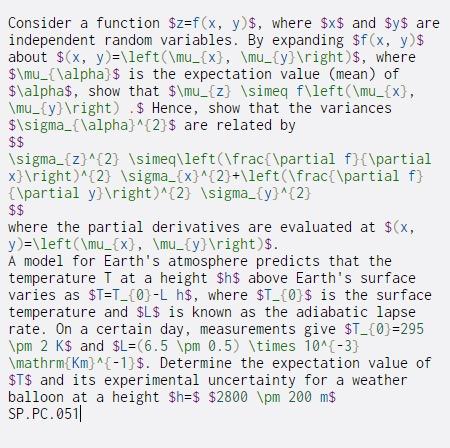Answered step by step
Verified Expert Solution
Question
1 Approved Answer
Consider a function $z=f(x, y)$, where $x$ and $y$ are independent random variables. By expanding $f(x, y)$ about $(x, y)=left(mu_{x}, mu_{y} ight) $, where $mu_{alpha]$

Step by Step Solution
There are 3 Steps involved in it
Step: 1

Get Instant Access to Expert-Tailored Solutions
See step-by-step solutions with expert insights and AI powered tools for academic success
Step: 2

Step: 3

Ace Your Homework with AI
Get the answers you need in no time with our AI-driven, step-by-step assistance
Get Started


